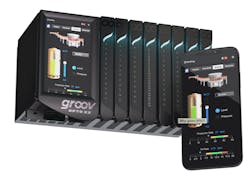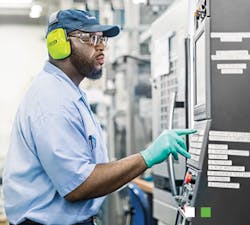Though the devices used in many Industrial Internet of Things (IIoT) projects may not be entirely new, the architectures used to facilitate IIoT levels of data aggregation, sharing, and analysis tend to be of a more recent vintage. So, even though you may be experienced in working with the types of controllers, sensors, and I/O systems used for IIoT initiatives, having access to quality support from your technology supplier(s) is critical to your project’s success.
But how do you go about assessing the level of support you should expect from a technology supplier for an IIoT project?
First, it’s important to realize that the evaluation should go far beyond knowing who will pick up the phone when you call—though this is an important aspect. The supplier’s support team should also be able to help you figure out the value proposition of the IIoT project you’re looking to implement. They should be able to help guide you in understanding what you can realistically expect to get out of the project, in operational terms, as well as the return on investment (ROI).
The support you get from your technology supplier should also address the design work typical at the beginning of an IIoT project. Scott McWilliams, vice president of global operations consulting at Emerson Automation Solutions, says, “IIoT opens up a new world and a new approach to how we design [automated production systems]. A vendor on a typical continuous-improvement project might only consider process design issues, but that typically just covers the inputs and outputs of one part of the process. Now, with IIoT, you’ve got to look at the inputs across an entire end-to-end process—because some critical inputs may originate in a business system outside of the plant. You’ll need the vendor to sit down and help you think out the whole process from the very beginning with a focus on how to improve both process efficiency and efficacy.”
Swagelok’s experience
Swagelok, a manufacturer of components for gas and fluid systems, was looking for a way to automatically monitor, record, and escalate its assembly process. To do this, the company needed to make information from its Allen-Bradley PLCs more readily available so that its support team could have quicker visibility into its shop floor operations.
Doing this via an Industrial Internet of Things (IIoT) project seemed a natural fit for collecting, sharing, and analyzing the relevant data. Matt DeLuca, quality engineer for Swagelok, says the company selected Opto 22’s groov EPIC (Edge Programmable Industrial Controller) for this project in no small part due to the quality of Opto 22’s support.
“When we first started, they gave us a very in-depth demo to explain the capabilities of the devices. Between then and now, we have done a handful of virtual training sessions and webinars that have helped us take our implementations to the next level,” says DeLuca. “Any time I have a question or issue, I have direct contacts with Opto 22, not an automated phone service. Their team has been more than willing to meet with our engineers and support teams to talk about additional features we would like to see or if a best practice could benefit us.”
Opto 22’s support staff are all engineers with access to an array of test equipment on hand to duplicate customers’ exact issues.
IIoT support: What to look for
Customers beginning an IIoT project should look to their vendors not just for expertise in the products they sell, but for an understanding of the larger technology landscape, says Garrick Reichert, application engineer at Opto 22.
“They might need help setting up their IIoT solution to succeed,” adds Reichert. “That’s why we engage in these conversations very early on. We get involved in designing the architecture of the system so that when it comes to any support needs they have later, we understand it from start to finish.”
Emerson’s McWilliams advises end users to question how they are supported in three stages of an IIoT project: pre-sale, go live, and post-implementation. “It’s not enough that you can call someone when the green light doesn't go on,” he says. That’s why pre-sales consultations are critical to ensuring you pick the right architecture and support to achieve the benefits you seek.
The customer needs to fully understand IIoT and the implications of the choices they make, says Travis Cox, co-director of sales engineering at Inductive Automation. “That means being transparent about things like data transport—do they own the data or not; and is it transported through an open mechanism where they can use a different cloud service. These aspects are really important.”
Cox adds that customers need to see that their technology supplier will be a committed partner. “You don’t want to call in and always get somebody different or have a person reading off a script. You need to be able to talk to someone who knows what they’re talking about.”
The vetting process
Labor shortages driven by COVID-19, coupled with increasing retirements in the manufacturing workforce and the relative newness of IIoT architectures, means that finding knowledgeable support personnel can be difficult.
“Many IoT platforms are relatively new to the market, so finding experienced IoT developers and solution architects to work on and maintain a system is a challenge,” says Richard Mizuno, Asia-Pacific principal and regional director at Kalypso, a Rockwell Automation company.
When vetting potential suppliers, keep in mind your need for support will stretch beyond system design, implementation, and maintenance.
Keith Chambers, Aveva’s vice president of operations management software, notes that one of the most critical moments in an IIoT project is when you revisit it to determine if it is delivering on its promise. After finishing a proof-of-concept project is a perfect time to make key adjustments to ensure ROI, he says.
It’s important to realize that “you’ll likely need to fine-tune the solution to deliver real value before you can justify any bigger investments to expand it in one plant or roll it out to others,” says Chambers.



